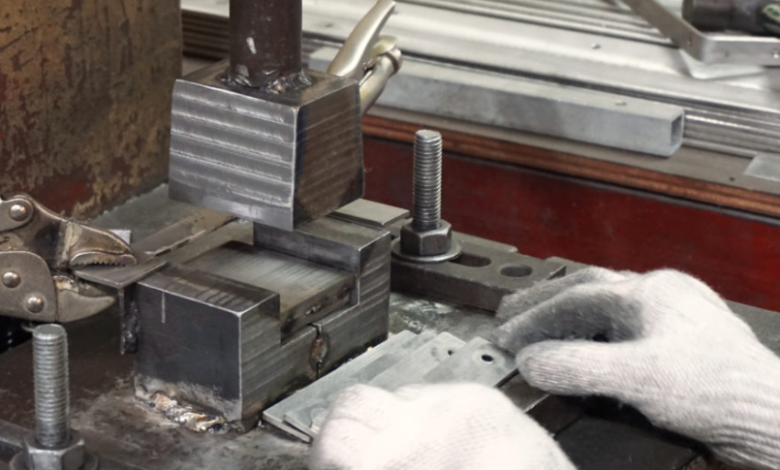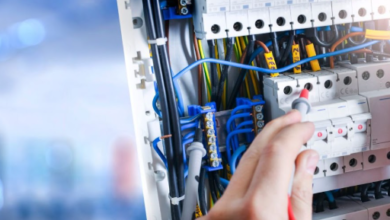Modern Applications and Benefits of Metal Stamping

Introduction to Metal Stamping
Metal stamping is a manufacturing process used to transform flat sheets of metal into precise shapes and components. This technique is vital in industries such as automotive, aerospace, electronics, and construction. Metal stamping provides cost-effective, high-volume production while ensuring accuracy and consistency for complex parts.
Understanding the Metal Stamping Process
The process begins with a metal sheet being placed into a stamping press. The press applies pressure using a die, which shapes or cuts the metal into the desired form. Operations in metal stamping include bending, punching, blanking, embossing, and coining. Depending on production needs, manufacturers may utilize progressive, transfer, or single-station stamping techniques to optimize efficiency and precision.
Advantages of Metal Stamping
Precision and Consistency
Metal stamping allows manufacturers to produce components with consistent dimensions and tight tolerances. This precision is essential for parts that must fit together accurately, such as automotive body panels, electronic connectors, and industrial machinery components. Reliable consistency reduces assembly errors and enhances product performance.
Cost-Effectiveness for High Volume
Once a die is created, metal stamping allows for rapid production of large quantities of parts with minimal labor input. This makes it ideal for industries that require high-volume manufacturing at low per-unit costs. Efficient production reduces material waste and shortens turnaround time, which is crucial for meeting market demands.
Material Flexibility
Metal stamping can be applied to various metals, including steel, aluminum, copper, brass, and stainless steel. Selecting the appropriate material ensures the final component meets strength, corrosion resistance, and durability requirements, depending on its application.
See also: The Intersection of Health and Technology: Advancements in Medical Tech
Key Applications of Metal Stamping
Automotive Components
In the automotive industry, metal stamping is widely used to create parts such as brackets, chassis components, body panels, and engine mounts. The accuracy and durability of stamped parts contribute to vehicle safety, performance, and longevity.
Electronics and Electrical Equipment
Metal stamping is used to manufacture connectors, terminals, enclosures, and heat sinks. The precision provided by stamping ensures proper electrical conductivity and reliable performance, which are critical in electronics and communication devices.
Industrial and Construction Hardware
Metal stamping is employed to produce hardware for industrial machinery, HVAC systems, and construction equipment. Items such as fasteners, housings, and gears can be stamped with exact tolerances, reducing assembly issues and improving operational efficiency.
Choosing the Right Metal Stamping Partner
Assessing Manufacturing Capabilities
When selecting a metal stamping partner, it is important to evaluate their production capacity and technological capabilities. Advanced presses, automation, and skilled technicians ensure that high-volume production can be delivered on schedule without compromising quality.
Ensuring Quality and Compliance
Reliable manufacturers follow stringent quality control measures, including dimensional checks, material testing, and defect inspection. Certifications like ISO 9001 demonstrate adherence to global quality standards, giving confidence that stamped components will meet both industry and client specifications.
Design and Engineering Support
A competent metal stamping provider can assist with design and engineering, optimizing parts for manufacturability. This includes guidance on material selection, die design, and process improvements, which can reduce costs and enhance component performance.
Trends in Metal Stamping
Modern metal stamping has embraced technological advancements such as automation, robotics, and precision CNC equipment. These innovations improve efficiency, reduce waste, and enhance part accuracy. Additionally, lightweight and advanced materials allow for innovative designs in automotive, aerospace, and electronics applications.
Benefits of Long-Term Manufacturing Relationships
Developing a long-term relationship with a trusted metal stamping provider offers numerous advantages. Businesses gain access to consistent quality, faster delivery times, and improved collaboration on new designs. Such partnerships foster innovation and allow companies to remain competitive in a fast-paced manufacturing environment.
Sustainability in Metal Stamping
Sustainable practices in metal stamping, such as material recycling, energy-efficient equipment, and waste reduction, are increasingly important. Manufacturers adopting these practices contribute to environmental responsibility while maintaining high-quality production standards.
Conclusion
Metal stamping is a critical process in modern manufacturing, offering precision, efficiency, and versatility for a wide range of industries. By partnering with an experienced metal stamping provider, businesses can achieve reliable, cost-effective, and high-quality components that meet stringent specifications. Evaluating production capabilities, quality control processes, and engineering support ensures successful outcomes, whether for high-volume production or complex, customized components.




